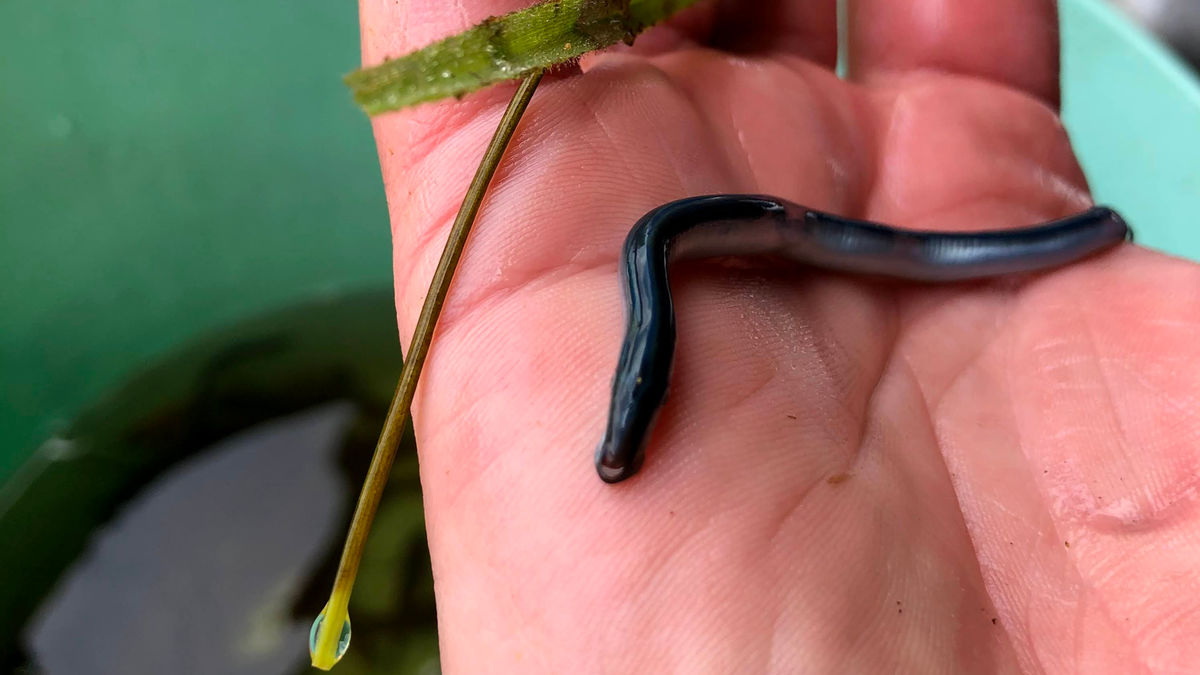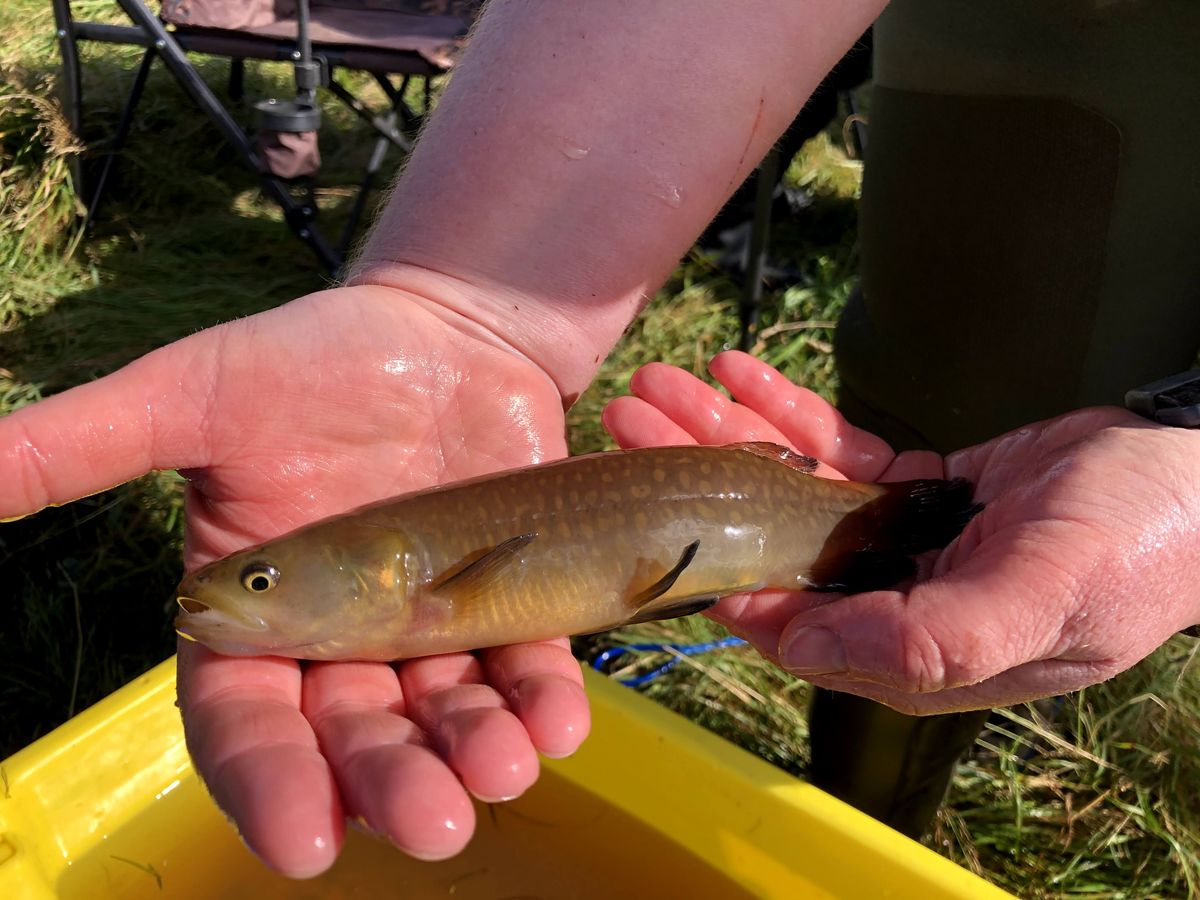
Research to study fish populations in Waituna Creek following lengthy lagoon closure
Media release 20 March 2023
Living Water staff are preparing to conduct the ninth round of fish monitoring in the lower Waituna Creek in Southland, later this month. The upcoming round will be unusual, because of the length of time that has passed since Waituna Lagoon was last opened.
Living Water, a partnership between the Department of Conservation (DOC) and Fonterra, are working with farmers, scientists, councils, communities and tangata whenua, under the banner of the Whakamana Te Waituna programme, towards restoring the mana of Waituna Lagoon and catchment. As part of this work, the fish population of Waituna Creek has been monitored annually since 2014, excluding 2020, when no sampling occurred due to restrictions imposed by the COVID-19 pandemic.
Eight to ten staff from DOC and the Cawthron Institute will spend two days collecting data at two sites in the lower Waituna Creek. Living Water ranger, Pat Hoffmann, says she’s particularly excited about this year’s survey, because the lagoon wasn’t opened in 2022, and this survey provides a rare opportunity to find out how keeping the lagoon closed for a year and a half may have affected fish populations.
“The annual survey involves catching, identifying, weighing and measuring fish to assess the status of different species in the creek,” says Hoffmann. “We use two electrofishing machines that create an electric current to temporarily stun, but not harm, the fish. We quickly scoop them up, identify the species, weigh and measure them, before returning the fish to the creek. In recent years, the lagoon has been artificially opened every year in winter or spring (or both), and the fish survey has typically been done 5 to 9 months later. So, while we have a good record of how fish populations look 5 to 9 months after the lagoon has been opened, we have less information about how they look when the lagoon has been closed for longer. The last time the lagoon was opened was in September 2021, which was 18 months ago. It will be interesting to see how keeping the lagoon closed for this long affects the numbers of migratory fish. We expect numbers of īnanga, for example, to be lower than in previous years.”
Tissue samples are also taken from fish for isotope analysis as part of a Waituna food web study. The value of isotope analysis is that it can show what the fish are consuming and where the food comes from. Hoffmann says understanding the food chain in Waituna is important, as several predatory fish and birds living further upstream in the catchment rely on migratory fish, especially īnanga coming up from the lagoon. “This work is helping us to quantify how the lagoon contributes to the diets of other fish upstream”.
Living Water selected the Waituna catchment to trial freshwater restoration methods, as it is an intensively farmed catchment, and the water quality is poor. Waituna Creek has been modified over the past century to provide drainage for farms in the catchment. These modifications have had a negative effect on fish habitat. For the last 5 years, Living Water has been trialling a new approach to managing the creek, that protects and restores fish habitat while maintaining land drainage. Two sites along Waituna Creek, located 500 metres apart and approximately 200m in length, were chosen to trial the stream habitat rehabilitation actions. Stream banks were reshaped to create a two-stage channel, which increased the capacity of the channel and created “benches” on which plants like native Carex could be planted. Macrocarpa logs and bundles of manuka were wired and anchored into the creek bed. These improved habitat for fish by increasing flow variability in the waterway and providing hiding places for fish. Extensive riparian planting was done to stabilise the banks, filter overland runoff, create shade and improve habitat for birds and insects.
Hoffmann says it’s rare in New Zealand to have nine years of fish survey data from one creek, and that it’s particularly useful to have data from before the restoration commenced and throughout the trial.
“By surveying the creek before any changes were made to it, Living Water and Cawthron were able to establish a baseline that we can now compare subsequent years’ survey results against”, says Hoffmann. “The results have confirmed that native fish are using the macrocarpa logs and manuka bundles. It also shows that relatively small improvements to the physical habitat of the creek can be very effective at increasing the biomass and diversity of fish. During the drought in 2022, when the creek was extremely low, refuges for fish would have been in short supply. Data from the 2022 survey show that the logs provided much needed habitat for giant kōkopu. This suggests that the instream structures Living Water installed improved the resilience of the giant kōkopu population during the drought.”
Staff from Cawthron are aiming to process the data from the upcoming survey and isotope analysis and write up the results by the middle of the year. The trial of the instream structures will be wrapped up this year, and the logs and bundles (which were temporary installations) will most likely be removed. Hoffmann says there’s much interest in learning from both the population survey and the food web study.
“If instream structures can contribute to improving and supporting healthy fish populations, as shown by the Living Water trial, then they should definitely be considered as part of our toolbox of methods for waterway restoration projects, both in Waituna and around Aotearoa”, says Hoffmann.

Pat Hoffmann
